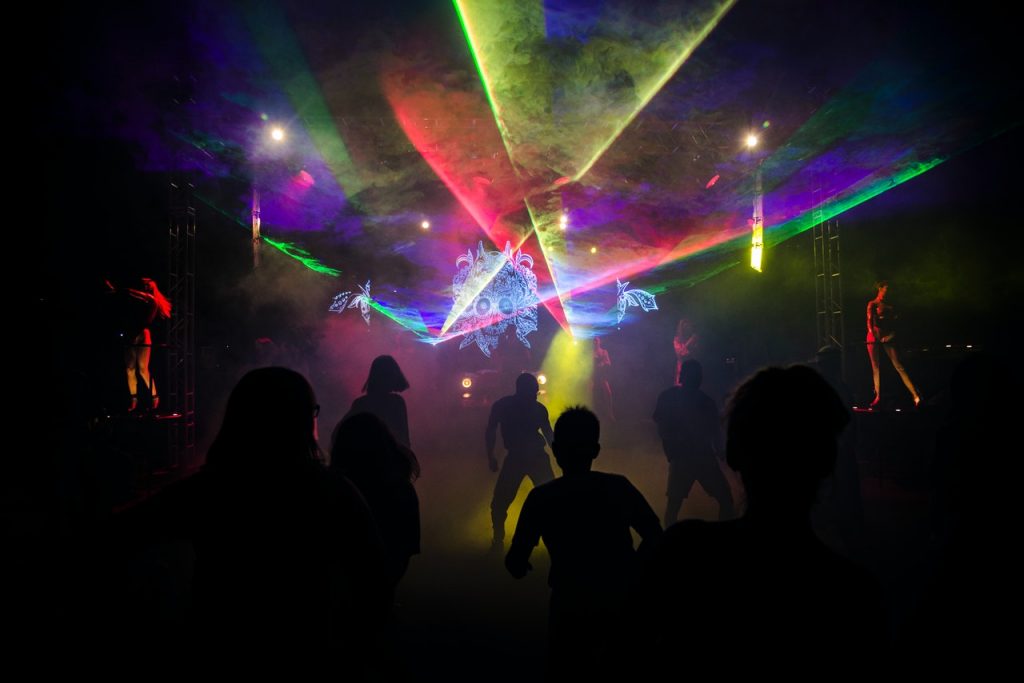There is always a risk of relapse after alcohol or drug addiction treatment. According to NIDA, about 40 to 60% of people relapse within the first year of recovery. That's because substance use alters the structure and function of the brain, and these effects persist well beyond when sobriety is first obtained. But the good news is relapse is part of the recovery process, and it's possible to break the cycle and live a healthy, fulfilling life. But first you have to learn how to identify, and avoid your worst relapse triggers.
Specific thoughts, feelings, and life events can trigger solid desires for drugs or alcohol, and if you don't handle them well, it could increase the chances of relapsing. According to a relapse prevention model by Marlatt and Gordon, relapse starts with a high-risk situation that's followed by poor coping mechanisms. As NIDA puts it, relapse rates for substance use are similar to those of chronic diseases like hypertension and asthma; if you stop following your medical treatment plan, you'll be likely to relapse.
A relapse usually happens in three stages
This stage starts way before you even think about using drugs or alcohol. Here, you might struggle to deal with your emotions healthily. You might keep your feelings inside, avoid people, pretend your problems aren't there, and forget to care for yourself. Even though using substances might not be on your mind at this point, avoiding your emotions and challenging situations can set the stage for a relapse later on.
In this stage, you start having conflicting feelings about staying sober. Part of you wants to keep clean, but another part is fighting intense cravings and secretly thinking about ways to relapse. Mental relapse can also involve remembering the good times when you used drugs, downplaying the dire consequences, and actively looking for opportunities to use again.

The final stage is when you start using drugs or alcohol. It might begin with a minor lapse, like having just one drink or drug. But it can quickly spiral into a full-blown relapse, where it feels like you have little to no control over using.
Understanding these stages can help you recognize the warning signs and take steps to prevent a relapse. It's important to address emotional struggles, conflicting thoughts, and cravings early on to maintain a strong foundation in your recovery journey.
Relapse triggers are things that can increase the risk of going back to drug or alcohol abuse. They include:
In a nutshell, relapse triggers can be as tangible as a specific person or place or internal feelings like loneliness and stress. If you experience these relapse red flags, here's how you can overcome them:
You need to know what your triggers are if you are to overcome them. The best way to do this is to perform a comprehensive self-examination, carefully analyzing the situation or stimuli that precede a relapse. This introspection will help you unveil patterns and connections between specific triggers and the desire to turn to addictive substances. When you can pinpoint your triggers with precision, you can proactively navigate around them.
Once you've identified your destructive triggers, the next step is to develop healthy coping strategies to replace the harmful behaviors associated with those triggers. Here are some strategies you can consider:
Social isolation can be a relapse trigger. So, in addition to the healthy coping skills above, you want to connect with friends and family. In addition, it tends to strain trust, communication, and emotional bonds.
Take time to apologize for any harm caused by your actions. You can also help your loved ones understand the nature of addiction and how they can support you in recovery. Better yet, consider involving your family in therapy sessions so you can address issues, improve communication and rebuild trust.

Beyond family and friends, you can join addiction-related support systems like 12-step programs to share your journey with those who have had similar experiences. Attend the meetings religiously, whether face-to-face, phone calls, or video chats, to maintain connections and accountability.
Establish clear boundaries in your relationships. Communicate your needs and ensure that your interactions contribute positively to your well-being. You also want to surround yourself with individuals who support your goals and are positive influences. Distance yourself from those who may hinder your progress.
If you're still struggling with managing your triggers, it's in your best interest to seek professional help. A licensed addiction counselor or therapist can provide specialized guidance tailored to your unique challenges. Professional support offers a confidential and non-judgmental space to figure out the root causes of your triggers, develop coping strategies, and work towards sustainable recovery.
Therapists can employ evidence-based approaches such as cognitive-behavioral therapy (CBT), motivational interviewing, or dialectical behavior therapy (DBT) to address both the mental health and behavioral aspects of addiction.
Additionally, a therapist can work collaboratively with you to create a relapse prevention plan, set realistic goals, monitor progress, and provide ongoing support as you navigate the journey of overcoming triggers and maintaining lasting change. Seeking professional help is a proactive step towards gaining the tools and insights needed to effectively manage triggers and build a foundation for a healthier, more fulfilling life.
Relapse triggers are situations, emotions, or cues that can prompt individuals in recovery from addiction to return to substance use. These triggers can vary widely and may include stress, negative emotions, social pressures, environmental cues, or exposure to drugs or alcohol. Understanding and identifying relapse triggers is crucial in addiction recovery because they represent potential vulnerabilities that can undermine progress and lead to a return toaddictive behaviors.
By recognizing and addressing relapse triggers, individuals in recovery can develop coping strategies, resilience, and alternative responses to manage challenging situations without resorting to substance use. Treatment programs often focus on teaching individuals how to identify and cope with relapse triggers effectively, empowering them to navigate high-risk situations and maintain long-term sobriety. Moreover, understanding relapse triggers can help loved ones and healthcare providers provide support and assistance tailored to the individual's needs, enhancing the likelihood of successful recovery.
Identifying and understanding relapse triggers plays a crucial role in the recovery process from addiction. By recognizing specific situations, emotions, or cues that may lead to relapse, individuals can develop greater self-awareness and insight into their vulnerabilities. This awareness allows them to anticipate and prepare for potential challenges, empowering them to proactively implement coping strategies and preventive measures to avoid relapse.
Moreover, understanding relapse triggers enables individuals to address underlying issues and develop healthier coping mechanisms to manage stress, cravings, and negative emotions effectively. Treatment programs often incorporate relapse prevention strategies that focus on identifying triggers and developing personalized coping skills tailored to the individual's needs. Additionally, loved ones and support networks can provide invaluable support and assistance by helping individuals navigate high-risk situations and reinforcing positive behaviors.
Ultimately, by actively engaging in the process of identifying and understanding relapse triggers, individuals in recovery can enhance their resilience, self-control, and long-term sobriety. This proactive approach strengthens their ability to maintain progress, overcome challenges, and achieve sustained recovery from addiction.
Emotional triggers can significantly impact relapse by eliciting intense cravings and impulses to use drugs or alcohol as a coping mechanism. To address these triggers effectively, individuals in recovery can utilize coping mechanisms such as developing emotional awareness through mindfulness, building healthy coping skills like deep breathing or journaling, seeking support from trusted individuals or support groups, practicing stress management techniques, maintaining a healthy lifestyle, and engaging in therapy to explore underlying emotional issues and develop effective coping strategies. By incorporating these strategies into their daily routines, individuals can strengthen their ability to manage emotional triggers and reduce the risk of relapse effectively.
Nutrition and physical wellness are vital for relapse prevention in recovery. A balanced diet rich in essential nutrients stabilizes mood, reduces cravings, and supports overall health, enhancing resilience against triggers associated with substance use. Similarly, regular exercise, sufficient sleep, and stress management techniques like mindfulness and deep breathing promote emotional stability and confidence, reducing vulnerability to relapse triggers. Prioritizing nutrition and physical well-being as part of a holistic recovery approach helps individuals maintain sobriety, manage cravings, and reduce the risk of relapse by bolstering overall health and resilience. Incorporating healthy lifestyle habits into daily routines strengthens individuals' ability to navigate challenges and sustain long-term sobriety.
Children who experience traumatic experiences have a higher risk of abusing drugs or alcohol as adults. Numerous studies have found a strong correlation between childhood trauma and addiction. For example, in a National Survey of Adolescents, teenagers who experienced sexual or physical abuse were 3 times more likely to report past or current substance abuse than those without a trauma history. Surveys of teens receiving substance abuse treatment also found that 70% of patients had trauma exposure at some point in their lives.
This article will explore the link between childhood trauma and adult addiction. We'll also discuss the psychological mechanisms that might contribute to this connection and provide insights into therapeutic approaches to address these underlying issues.
Childhood trauma refers to experiences during one's formative years that are emotionally or physically harmful and have the potential to disrupt normal development. These experiences often involve a child feeling threatened, frightened, or helpless. Childhood trauma can take various forms, including:

The impact of childhood scars from traumatic experiences can be profound and may manifest in various ways, influencing emotional, cognitive, and behavioral aspects of a person's life. Sadly, about two-thirds of teens and adolescents report experiencing at least one childhood trauma by age 16.
Childhood trauma has been linked to different mental health issues like anxiety, depression, and post-traumatic stress disorder (PTSD). These mental health issues can lead to addiction or exacerbate the symptoms of addiction. Other ramifications include:
Addiction and mental health illness are both chronic brain disorders that often overlap. This means that many people with substance use disorders usually have underlying mental health issues as well.
According to the SAMHSA, about 9 million people have co-occurring disorders. While neither condition leads to the other, they often exist together, and one condition can aggravate the symptoms of the other.
When a child goes through traumatic events during their formative years, it can shape the way their brain develops and processes information. Several interconnected factors contribute to the link between childhood trauma and the development of addictive behaviors.
One such factor is the increased risk of mental health disorders. Childhood trauma increases one’s vulnerability to the development of anxiety, depression, and PTSD. These mental health issues have been found to co-occur with substance use. And the reason behind that is people with untreated mental health diseases are more likely to turn to substances as a form of self-medication.
Traumatic experiences in childhood can overwhelm a child's ability to cope with stress and emotions. In the absence of healthy coping strategies, they may turn to substances as a way to self-soothe, escape emotional pain, or numb distressing feelings associated with the trauma.
Childhood trauma can influence the development of the brain, particularly areas related to stress regulation, emotional processing, and impulse control. These alterations may contribute to a heightened susceptibility to addictive behaviors later in life.
Substance use may serve as a way to escape or suppress painful memories associated with the trauma. Drugs or alcohol can temporarily alleviate emotional distress, providing a perceived sense of relief.
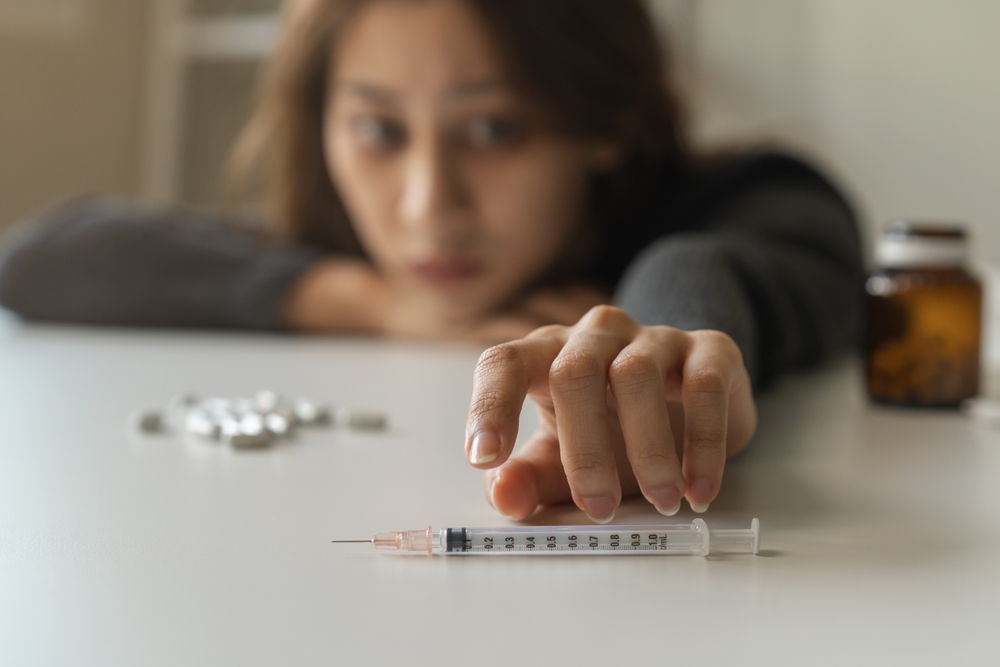
Trauma can negatively impact self-esteem and contribute to a distorted self-perception. Substance use may be employed to help cope with feelings of guilt, shame, or inadequacy resulting from the trauma.
The social and environmental context in which childhood trauma occurs can also contribute to the risk of addiction. Lack of support systems, exposure to substance abuse within the family, or living in environments with high levels of stress and instability can further amplify the risk.
Individuals who have experienced abuse and neglect may be more likely to perpetuate a cycle of trauma within their own families. This intergenerational transmission of trauma can create an ongoing risk for substance abuse across generations.
The good news is that there are different therapeutic approaches to help address underlying issues. Here's a look at some common treatment modalities for teens, adolescents, and adults:
CPT is a type of cognitive-behavioral therapy (CBT) specifically designed to treat PTSD. It aims to help people challenge and modify distorted thoughts and beliefs about the traumatic event. The therapy involves identifying and addressing the impact of trauma on beliefs about safety, trust, power, esteem, and intimacy.
EMDR is a structured therapy that targets traumatic memories and helps one process them. It involves bilateral stimulation, typically through side-to-side eye movements, while the person focuses on distressing memories. This process aims to facilitate the adaptive processing of traumatic information and reduce emotional distress.
NET is an evidence-based therapy designed for those who have experienced multiple or complex traumas. It involves the detailed narration of the individual's life story, including traumatic events. Through retelling the narrative, the therapist helps the person integrate these experiences into a coherent life story, promoting a sense of mastery and understanding.

Play therapy is an approach that utilizes play to help individuals, especially children, express themselves and process their experiences. Therapists can gain insights into the child's thoughts and feelings through various forms of play, such as art, games, or symbolic play. Play therapy provides a non-threatening way for children to communicate and cope with trauma.
In cases where both addiction and mental health issues are present, one will need a comprehensive and integrated approach to treatment. Comprehensive treatment addresses the mental health and substance use issues at the same time as opposed to treating them separately. Co-occurring mental health and addiction treatment usually involves multidisciplinary teams encompassing addiction specialists, health counselors, medical professionals, and social workers who collaborate to provide holistic interventions. Treatment options for co-occurring disorders include:
The integration of various therapeutic modalities ensures a comprehensive strategy that targets addiction and mental health symptoms and promotes overall well-being and resilience.
Drug screening is a common practice employers, schools, and other organizations use to ensure people are not using illegal drugs or misusing prescription medications. It may also be used to detect the presence of performance-enhancing drugs, like steroids, in the case of sports.
There are many types of drug tests based on the biological sample they use and the types of drugs they detect. These include urine, blood, breath, sweat, saliva, and hair follicle drug test. But unlike all other tests, hair drug test provides information on substance abuse over time.
A hair follicle drug test analyzes a small sample of hair to detect the presence of drugs in the system. That's because a strand of hair serves as a timeline of one's substance intake history. You might have used marijuana weeks ago, which would be detected through a hair drug test.
The reason is that when you use drugs, the body metabolizes and circulates them in the bloodstream. As blood flows to the hair follicles, drug metabolites are deposited into the growing hair shafts. These drug metabolites remain in the hair as it grows, creating a record of drug use over time.
Hair drug tests can detect drug use up to 90 days before the test, but they can have a detection time of up to 12 months for slower-growing hair. This means that if you have used drugs in the past three months (sometimes more), the drug metabolites will be present in your hair sample.
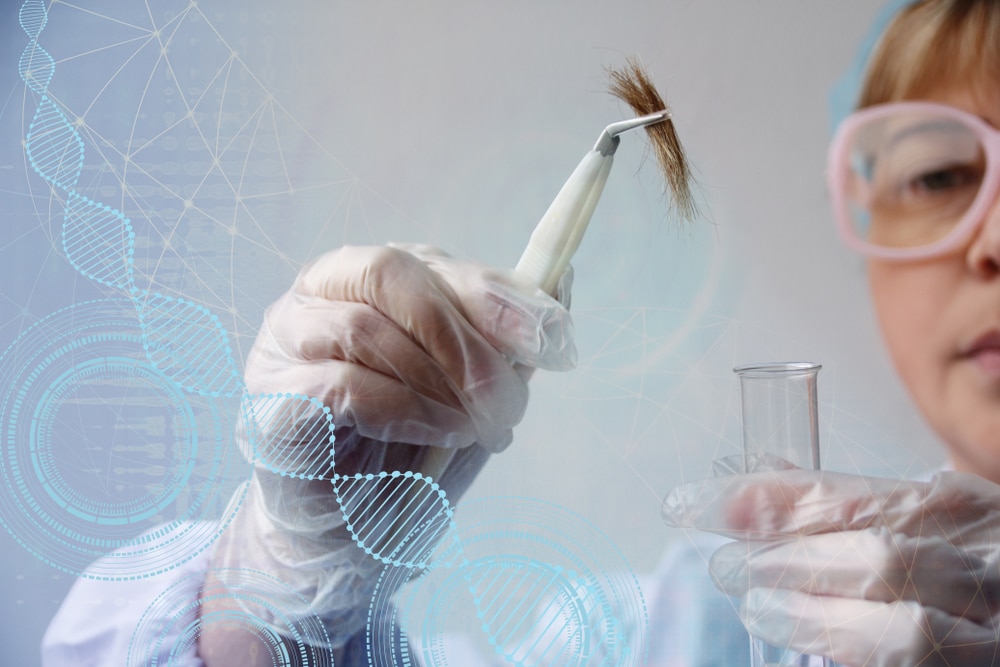
Hair drug tests are typically used when there is a need for a highly sensitive and accurate method of detecting drug use. Here are some common situations where a hair drug test may be required:
Trying to cheat or manipulate a hair drug test can have serious consequences, including loss of employment, legal and financial penalties, and damage to your reputation. The best way to pass a hair drug test is to abstain from drug use and maintain sobriety. Here are some ways people try to cheat on the test.
The most reliable way to pass a hair follicle drug test is to abstain from drug use altogether. However, if you have used drugs in the past and are concerned about passing a hair drug test, there are a few things you can try:
The hair drug test can only detect drug use within the last 90 days, so if you have been clean for longer than that, your test results should be negative.
There are shampoos available that claim to remove drug metabolites from the hair. While these products may help remove some residue on the hair's surface, they are unlikely to penetrate deep into the hair shaft, where drug metabolites accumulate. Additionally, many of these shampoos can cause hair damage or scalp irritation.
Some hair salons offer hair treatments that claim to remove drug metabolites from the hair. These treatments may involve a combination of deep cleansing shampoos, conditioners, and scalp treatments. However, there is no scientific evidence to support the effectiveness of these treatments.
Some people suggest using natural remedies, such as vinegar or baking soda, to remove drug metabolites from the hair. However, no scientific evidence supports the effectiveness of these remedies.
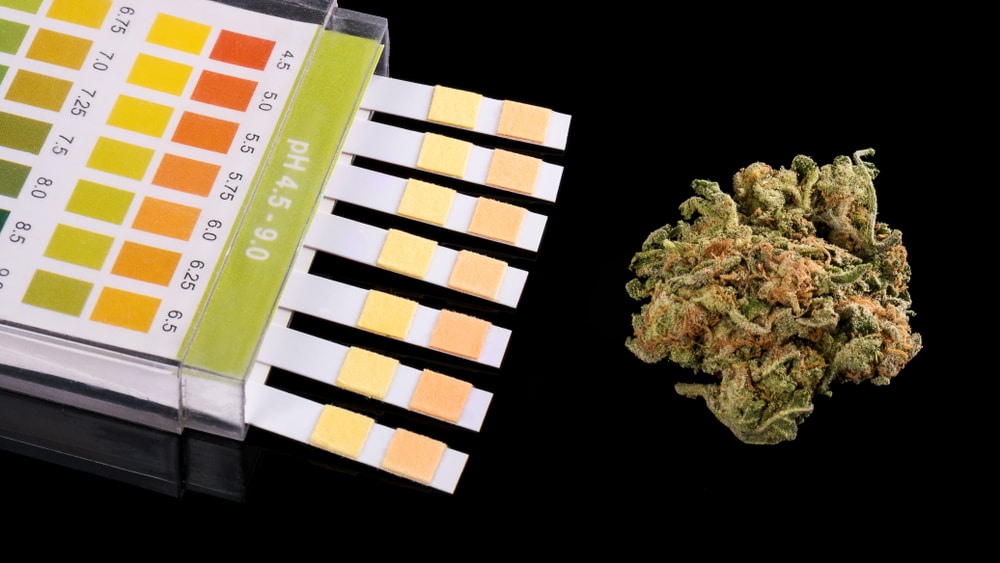
You can get a hair drug test at different places depending on the purpose. For example, if you need a hair drug test for employment or legal purposes, you may be required to take the test at a designated testing facility chosen by your employer or the legal authorities. These testing facilities may include specialized drug testing centers, clinics, or laboratories.
If you need a hair drug test for personal reasons, such as monitoring your drug use or testing a family member, you can purchase at-home hair drug testing kits from online retailers or some drug stores.
Some medical facilities may also offer hair drug testing as part of their diagnostic services, particularly if drug use is suspected as a possible cause of a medical condition.
Hair drug tests are more expensive than urine, saliva, or blood tests. According to Healthline, drug tests performed in a lab or hospital may cost between $100 and $125, while an at-home hair drug test kit costs between $64.95 and $85. The cost variation is due to various factors, including the type of hair drug test ordered, where the sample is collected, and who's covering the costs.
Hair drug tests are highly accurate and reliable, with a detection window of up to 90 days. They are considered one of the most reliable drug testing methods, as they can detect drug use that occurred several months ago.
The hair drug test accuracy is attributed to the fact that drug metabolites are incorporated into the hair shaft as it grows and remain there, making it difficult to tamper with or cheat the test. However, false positives can occur if the person being tested has been exposed to drugs passively or if the samples have been mixed up. Generally, hair drug tests are considered very accurate and widely used in drug testing programs.
Failing a hair follicle drug test can have significant consequences, particularly in professional, legal, or personal contexts. In professional settings, such as employment or academic institutions, failing a drug test may result in disciplinary actions, including termination of employment, academic probation, or loss of professional licensure. This can have serious implications for one's career or educational opportunities, potentially leading to financial instability and damage to one's reputation.
In legal contexts, such as probation or parole, failing a drug test may lead to legal consequences, such as additional fines, community service, or incarceration. Moreover, failing a drug test can impact personal relationships and social standing, leading to strained relationships with family, friends, or peers. Additionally, repeated failures of drug tests may indicate a continued struggle with substance abuse, highlighting the need for intervention and support to address underlying issues and promote recovery. Therefore, it's crucial for individuals to be aware of the potential consequences of failing a hair follicle drug test and to seek help if they are struggling with substance abuse to mitigate these risks and pursue a healthier path forward.
Passing a hair follicle drug test after recent drug use is unlikely, as this type of test can detect drug use over a longer period compared to other testing methods. Hair follicle drug tests can typically detect drug use within the past 90 days, depending on the length of the hair sample collected. However, factors such as the type of drug used, the frequency of use, and individual variations in hair growth and drug metabolism can affect the accuracy of the test results.
While there are various methods and products marketed as "hair detox" or "hair cleansing"products that claim to help individuals pass a hair follicle drug test, their effectiveness is often disputed, and there is limited scientific evidence to support their claims. It's essential to approach such products with caution and consult with a healthcare professional or addiction specialist for guidance on appropriate strategies for addressing substance use concerns.Ultimately, the best way to pass a hair follicle drug test is to abstain from drug use for the detection window of the test and seek support for any substance use issues to promote long-term recovery and well-being.
Methods for passing a hair follicle drug test, such as using detox shampoos or home remedies, are generally considered unreliable and may not guarantee accurate results. While some individuals may claim success with these methods, their effectiveness is often anecdotal and lacks scientific validation. Hair follicle drug tests are designed to detect drug use over a longer period, typically up to 90 days, and are more difficult to manipulate compared to other types of drug tests.
Detox shampoos and similar products marketed as "hair detox" or "hair cleansing" treatments may claim to remove drug metabolites from the hair or mask their presence, but there is limited scientific evidence to support their efficacy. Additionally, some methods for passing hair follicle drug tests may involve potentially harmful practices or substances that could pose health risks. Therefore, it's crucial to approach these methods with caution and prioritize strategies that promote genuine sobriety and well-being, such as seeking professional support for substance use concerns and adopting healthier lifestyle choices. Ultimately, the reliability of methods for passing a hair follicle drug test is uncertain, and individuals should carefully consider their options and seek guidance from healthcare professionals or addiction specialists when addressing substance use issues.
A hair follicle drug test can detect a wide range of substances, including marijuana (THC),cocaine, heroin (opiates), amphetamines (including methamphetamine), phencyclidine (PCP), benzodiazepines (such as Xanax or Valium), ecstasy (MDMA), prescription medications (such as opioids, benzodiazepines, and stimulants), synthetic drugs (such as synthetic cannabinoids or designer drugs), and alcohol (though less commonly tested through hair follicle testing). These substances can be detected in the hair follicle test depending on the specific panel ordered by the testing facility. The detection window for each substance varies but typically ranges from a few days to several months, depending on factors such as the length of the hair sample and the rate of hair growth. It's important to note that hair follicle drug tests are designed to provide a longer detection window compared to other types of drug tests, making them more suitable for detecting historical drug use rather than recent ingestion.
Addiction is a complex disorder that results from a combination of genetic, lifestyle, and environmental factors. The role of genetics in addiction has been widely studied over the last few decades, and research has shown that certain genetic factors contribute to an individual's susceptibility to addiction.
One of the most studied genetic factors in addiction is the presence of specific variations in genes that encode proteins involved in the brain's reward system, such as dopamine and serotonin receptors. These variations may affect how these proteins function, leading to alterations in the brain's reward circuitry, which can result in addiction. Other genes linked to addiction include those involved in stress response, impulse control, and decision-making.
For example, researchers have identified specific genes that may influence an individual's response to drugs and alcohol, including genes that affect the metabolism of drugs, the neurotransmitter systems involved in reward and pleasure, and the stress response system. And while research in this area is still ongoing, some genes linked to addiction or protection against addiction include:
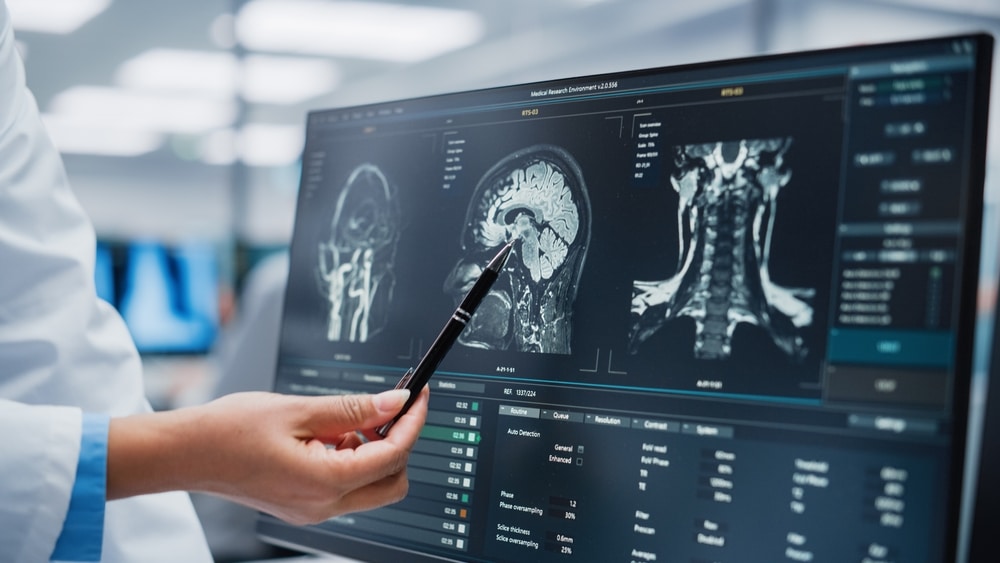
Moreover, family studies that include siblings, fraternal twins, identical twins, and adoptees suggest that as much as 50% of a person's risk of becoming addicted to alcohol, nicotine, or other drugs depends on their genetic makeup.
Research on the human genome reveals that humans are 99.9% identical on a genetic level. But the 0.1% variation is critical as it's responsible for the differences in their sequence of DNA bases. These differences contribute to visible variations like hair color and height and invisible traits like protection from or increased risk for diabetes, stroke, heart attack, and addiction.
Genetics is just one factor that contributes to addiction, and the influence of genetic factors can vary depending on an individual's environment and life experiences. Furthermore, not everyone with a family history of addiction will develop substance abuse disorder. People without genetic risk factors still have a risk of developing an addiction. Here are some other factors that contribute to addiction:
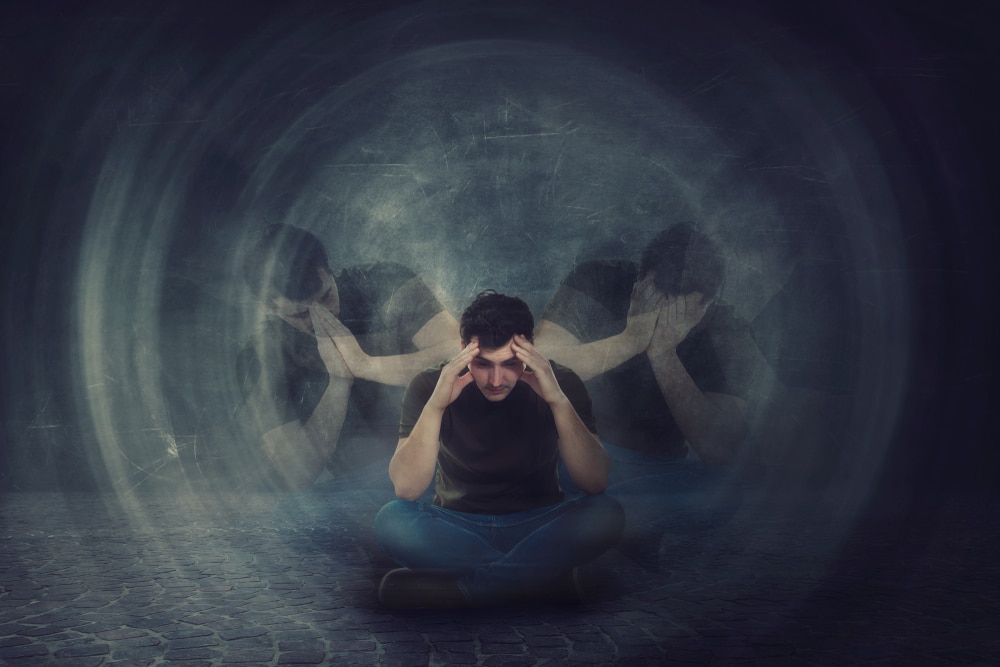
Genetic research has provided a better understanding of the complex interplay between genes and diseases like addiction. Today, mutations like BRCA 1 and 2 that predispose patients to a high risk of ovarian and breast cancer serve as crucial medical tools in assessing one's risk of severe diseases. Researchers can now unravel the genetics of single-gene disorders like breast/ovarian cancer, sickle cell anemia, cystic fibrosis, and addiction.
Understanding the genetic basis of addiction makes it easier to identify individuals who are more susceptible to addiction. By using genetic testing to identify these variations, healthcare providers can better evaluate a person's unique addiction risks. But this is an area that needs more research.
In addition to identifying individuals who are more susceptible to addiction, the knowledge of genetics can also inform addiction treatment approaches through pharmacogenetics. Pharmacogenetics studies how an individual's genetic makeup affects their response to medications. By tailoring addiction medications to an individual's genetic makeup, healthcare providers can improve treatment efficacy and reduce the risk of adverse side effects.
If you have a genetic predisposition to addiction, taking proactive steps to manage your risk and prevent addiction is essential. Here are some things you can do:
Remember that having a genetic predisposition to addiction does not mean that you will automatically develop an addiction. Taking proactive steps to manage your risk and getting help if needed can reduce your chances of addiction and help you live a healthy, fulfilling life.
California Sober is a trending term that was popularized by singer-songwriter Demi Lovato. The singer released her song, California Sober, after a near-death opioid overdose in 2018. In her interview with CBS News, Lovato said she best identifies with the term California Sober.
But what exactly does the term California Sober mean?
While traditional sobriety is defined as abstaining from any drug or alcohol, the California Sober approach is about using certain drugs in moderation.
California Sober, or Cali sober, refers to abstinence from all substances except smoking weed or ingesting marijuana. People interpret the exceptions differently, but marijuana is the most commonly cited "acceptable" substance for those who consider themselves California Sober. The term, California Sober, is associated with Michelle Lhooq, who wrote an article on Vice.com explaining how she streamlines her substance abuse to improve her health. The writer stopped using all drugs except marijuana and some psychedelics when she relocated to California from New York.
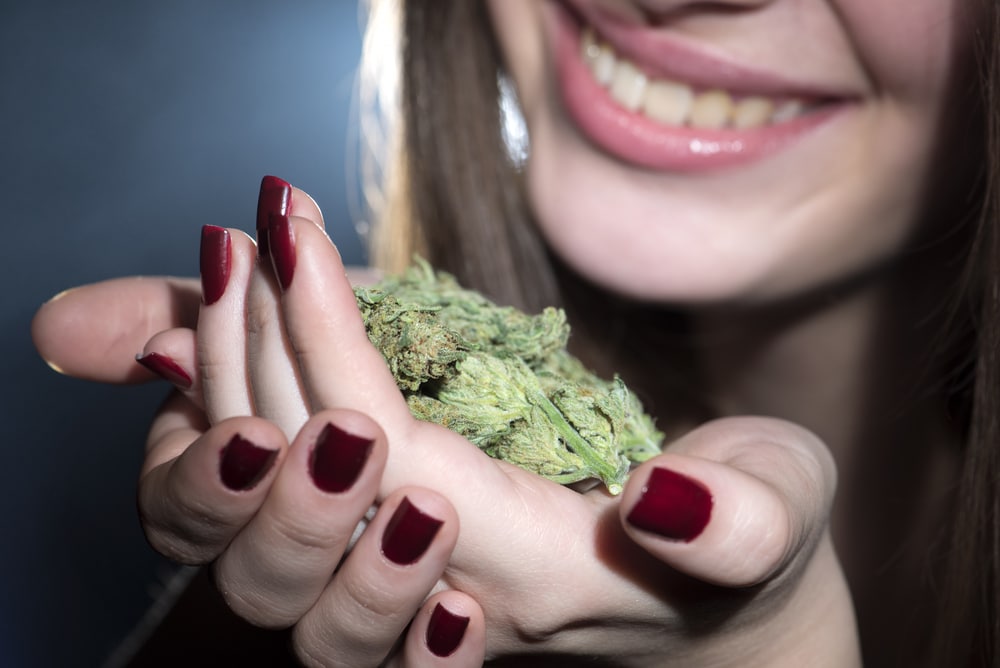
In their interview with CBS in her Los Angeles home, Demi Lovato said quitting drug use partially worked well for her. "I am cautious to say that, just like I feel the complete abstinent method isn't a one-size-fits-all solution for everybody, I don't think that this journey of moderation is a one-size-fits-all solution for everybody," she told CBS news. In their case, they replaced opioids with marijuana and alcohol.
But the singer now has a different outlook on things and believes that traditional sobriety is the way to go.
Harm reduction seeks to provide users with safer and healthier options to reduce the harm associated with substance abuse. The approach follows principles like:
By most definitions, Cali sober isn't harm reduction. This approach is primarily about replacing substances, like opioids and alcohol, with marijuana as a "softer" alternative. While this may work for some people, it doesn't necessarily change their relationship with drugs. It just shifts it from one substance to another, potentially a more accepted one.
When considering California Sober as a form of harm reduction, it's essential to speak with a medical professional or addiction specialist. They can guide how to safely reduce drug use and provide resources to those who wish to pursue abstinence.

The main benefit of Cali Sober is that it allows individuals to reduce the risk associated with certain drugs while still getting some of the pleasure they seek. For example, a person who has struggled with alcohol abuse may find that using marijuana in moderation is a less risky alternative. The switch is also common among those who experience hangovers or sleeplessness.
The California Sober approach allows users to escape the strict abstinence-only models of traditional sobriety and gives them more leeway to experiment. This is especially important for those with no behavioral addictions or behavioral health issues like opioid or alcohol abuse.
Marijuana is an addictive substance but carries fewer risks than drugs like opioids, heroin, cocaine, or fentanyl. It doesn't cause overdose or blood-borne disease and is legal in most states.
There are some potential risks associated with the California Sober approach. Some common ones include:
Finding the right balance between safe drug use and substance abuse can be tricky. According to the CDC, marijuana use can lead to addiction, especially for those who start using at a young age or use it frequently. Other factors like family history, mental health issues, peer pressure, social isolation, and lack of family involvement can also contribute to cannabis use disorder. And like any other substance use disorder, CUD can hurt one's physical and mental health.
Semi-sobriety involves setting limits on intake and gradually decreasing the frequency and amount of substance use over a period of time. It is often done with other strategies like lifestyle changes, alternative therapies, and counseling. But since the definition of moderation varies greatly, it's easy for some people to go overboard. For those who have a hard time controlling use, it can be a good idea to cut use completely.
While marijuana is the most commonly used drug in the California Sober approach, some individuals may use other substances like alcohol, tobacco, or even prescription drugs instead. Some may modify it further to use marijuana during the week and hard drugs over the weekend. The lack of rationalization of this approach can increase the chances of relapse. In contrast, the abstinence recovery model requires total abstinence from all mind-altering substances to ensure sobriety.
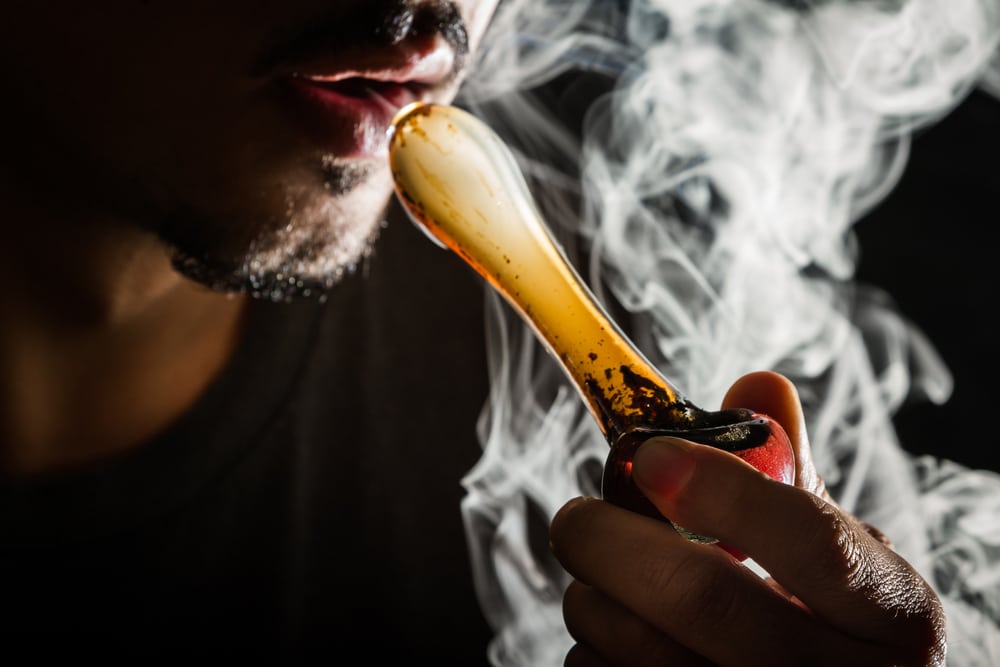
When following the California Sober approach, one must constantly decide what is acceptable drug use and what isn't. For example, they'll need to figure out things like:
This can become exhausting and can lead to burnout, which has the potential to create a slippery slope back into addiction.
Ultimately, to ensure lasting recovery, people should be guided toward a holistic approach that looks at the underlying cause of addiction. This might include addressing mental health conditions and developing healthier coping strategies for stress or trauma. Treatment options like cognitive behavioral therapy, yoga, and meditation can also help build resilience to cravings.
To summarize, Cali Sober is an increasingly popular approach to sobriety that allows individuals to consume marijuana in moderation while giving up other drugs. However, it's essential to keep in mind that there are some risks associated with this approach, and it should be done thoughtfully. This approach can help individuals find a healthier balance between abstinence and drug use when used responsibly.
If you or someone you know is struggling with addiction, seek help from an addiction specialist. Recovery is possible, and taking the first step can make all the difference.
As the prevalence of mental health issues and substance use disorder continue to rise in the United States, the search for new and innovative treatments has become more urgent. One potential therapy that is gaining popularity is psilocybin mushrooms. Psilocybin, the main active ingredient in magic mushrooms, has shown effectiveness in treating alcohol use disorders (AUD).
A clinical study published in Jama Psychiatry found that psilocybin could help people with alcohol use disorders reduce their drinking days. The study participants were given 12 weeks of manualized psychotherapy and were randomly selected to get psilocybin or diphenhydramine during 2-day-long medication sessions at weeks 4 and 8. The results showed that over 50% of the participants who were assigned psilocybin stopped drinking entirely for months or even years.
After 32 weeks of analyzing the 93 participants with alcohol use disorders, researchers discovered that the 48 participants who got psilocybin and psychotherapy had an 83% reduction in their drinking habits within 8 months of their first dose, while those assigned placeboes had 51%. While the exact mechanism of action is not known, it is thought that psilocybin helps to break the cycle of addiction by:
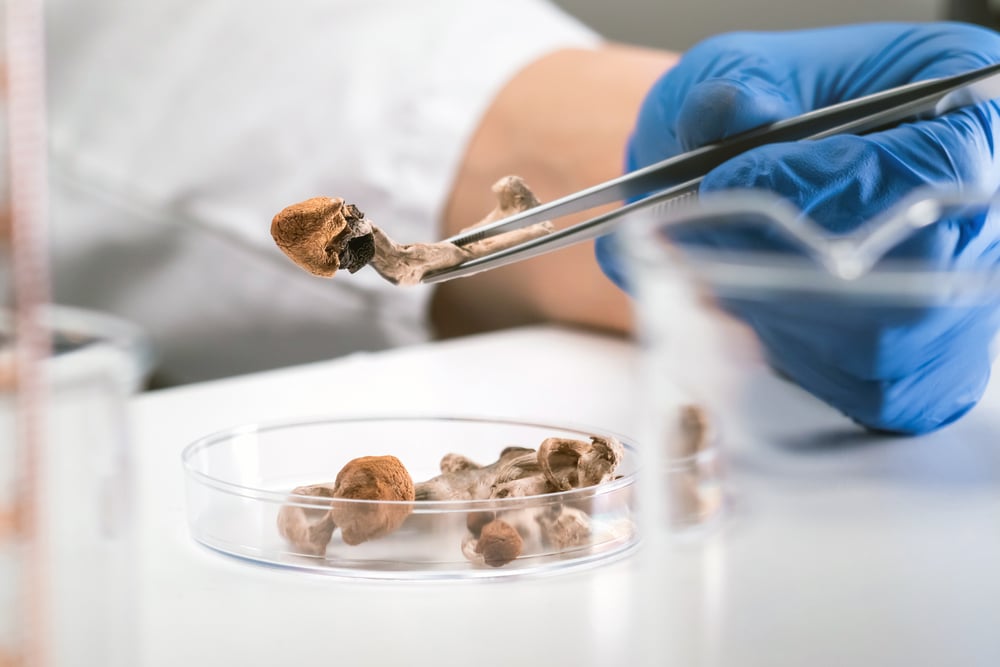
The safety and efficacy of psilocybin mushrooms as a treatment for alcohol addiction are still being studied, but the preliminary evidence is promising. As a precaution, you should never consume psilocybin mushrooms without the supervision of a trained medical professional. Psilocybin may be riskier in an uncontrolled environment because your experiences may feel extreme. For example, you may feel severe anxiety while under the influence of the drug.
Other common side effects are nausea and vomiting, paranoia, and delusions. In rare cases, psilocybin mushrooms can cause psychotic episodes. Psilocybin mushrooms can also interact with other drugs and medications. For example, they can intensify the effects of antidepressants and anti-anxiety medication.
It is always important to speak with a medical professional before consuming psilocybin mushrooms, especially if you are taking other medication.
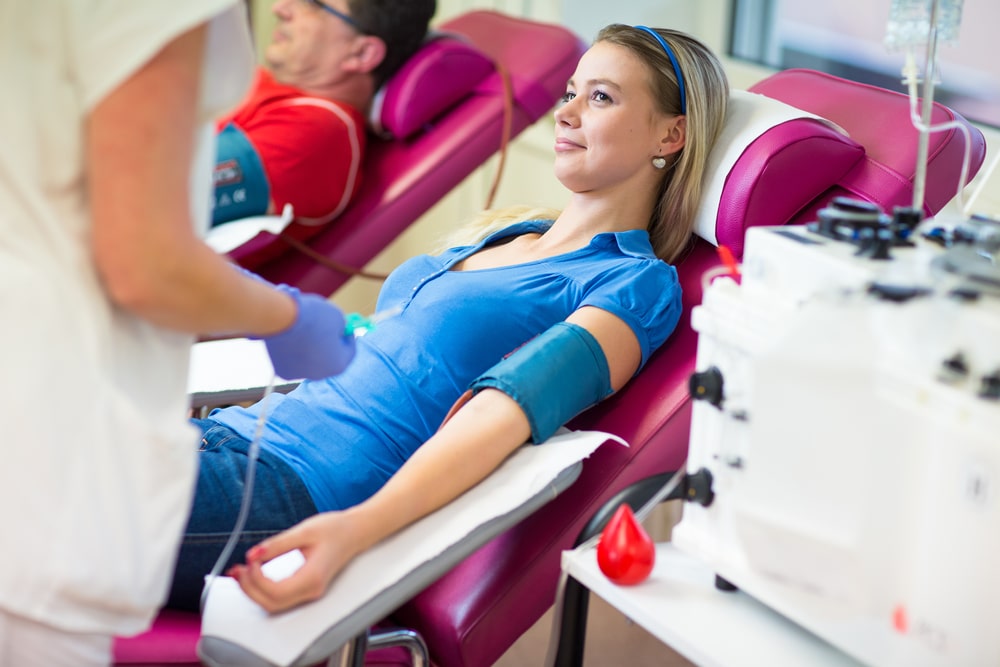
Psilocybin mushrooms are a type of mushroom that contains the psychoactive compound psilocybin. Psilocybin is a naturally occurring psychedelic compound that is found in over 200 species of mushrooms. When consumed, it can produce powerful hallucinations and an altered state of consciousness. Some people use psilocybin mushrooms for recreational purposes, while others use them for medicinal or spiritual purposes.
Psilocybin has been shown to be an effective treatment for various conditions, including depression, anxiety, and addiction. It is also being studied as a potential treatment for PTSD and OCD. Although psilocybin mushrooms are legal in some countries, they are illegal in most parts of the world. Possession and consumption of psilocybin mushrooms can lead to jail time and heavy fines.
Alcohol addiction is a serious problem that can lead to various negative consequences, including health problems, relationship difficulties, and financial problems. In some cases, alcohol addiction can even lead to death.
According to the National Institute on Alcohol Abuse and Alcoholism, alcohol is a factor in about 95,000 deaths annually in the United States. These deaths are due to various causes, including alcohol-related accidents, liver diseases, and other health complications.
Treatment rates for alcohol use disorder are low (e.g., 7.6% in 2021), and the Food and Drug Administration has only approved 4 AUD evidence-based medications since 1947.
While these medications can help people with alcohol addiction, they have been shown to be only partially effective. Psilocybin mushrooms have shown promise as a treatment for substance use disorders and could potentially help to reduce the number of deaths due to alcohol addiction.
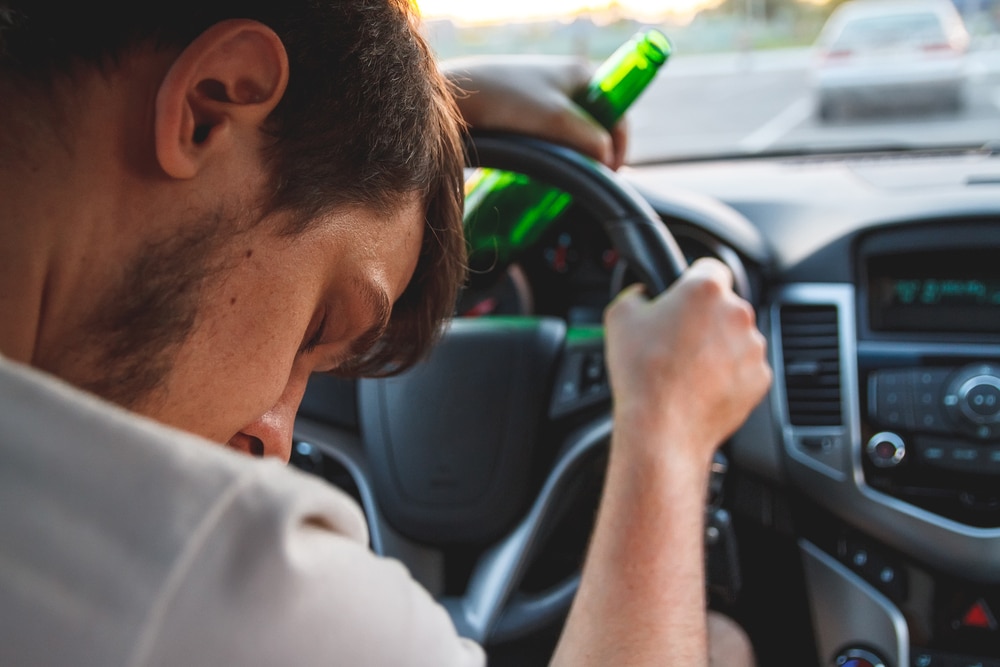
Although the study’s results are encouraging, it is important to note that it's a small study with a limited number of participants. More research is needed to confirm the findings and to determine the long-term efficacy of psilocybin mushrooms as a treatment for alcohol addiction. The study only analyzed 93 participants, and only 50 were given psilocybin as such research needs to be done in a bigger and more diverse population.
Besides, the study used diphenhydramine, an antihistamine, as a placebo, which is not an ideal substitute for psilocybin. It was also observed that the participants didn’t have serious drinking problems as those who usually enrolled in clinical trials for alcohol use disorders. The clinical trial may have attracted participants who were already managing their condition. Most notably, the researchers didn't include participants with underlying mental disorders like depression so they could establish if psilocybin-assisted therapy treats AUD and not other co-occurring disorders.
But patients with severe AUD can benefit from the therapy. This is especially true if the therapy can address other issues that underlie physical dependence and mental disorders. In this case, the treatment will simultaneously address both conditions.
Ketamine is also showing potential as a treatment for alcohol addiction. A group of researchers found that Ketamine disrupts memories to help heavy drinkers stop drinking or cut back. Ketamine blocks the NMDA receptors, disrupting the reconsolidation of memories associated with alcohol consumption. As a result, heavy drinkers who receive ketamine treatment may have fewer cravings for alcohol.
It has also been shown to be an effective treatment for various conditions, including depression, anxiety, and chronic pain.
Psilocybin mushrooms and Ketamine have shown promise as potential treatments for alcohol addiction and some mental health issues. However, more research is needed to confirm the findings. If you or someone you know is struggling with alcohol addiction, many resources are available to help. Never try psilocybin mushrooms or Ketamine outside a clinical setting, as they can be dangerous.
Many people who use stimulants or MDMA report that they grind their teeth during periods of drug use. This phenomenon is known as bruxism and can cause several problems, including headaches, jaw pain, and damage to teeth.
While it's not clear why drugs cause bruxism, it is thought that bruxism occurs due to the effects of drugs on the body's central nervous system. Other theories suggest that it may result from anxiety or other psychological factors.
Regardless of the cause, bruxism can be a dangerous condition, and it is important to seek treatment if you think you may be affected. Your dentist can help identify the signs of bruxism and recommend appropriate treatments. You can keep your teeth healthy and avoid any long-term damage with proper care.
Bruxism is a condition characterized by the grinding or clenching of teeth. It can occur while a person is awake (awake bruxism) or asleep (sleep bruxism).
Left untreated, bruxism can lead to several serious problems, including jaw pain, headaches, and damage to the teeth. It can also cause sleep disorders like sleep apnea.

The exact cause of bruxism is not fully understood, but it is thought to be linked to stress or anxiety and drug use.
Bruxism can be caused by medications that act on the nervous system, such as antidepressants, antihistamines, and bronchodilators. It can also be a side effect of stimulants, such as caffeine and amphetamines. In some cases, drug-induced bruxism may be caused by illicit drugs, such as cocaine and methamphetamine.
Persistent bruxism can lead to jaw muscles and tooth damage, headaches, jaw pain, and temporomandibular joint disorder. It can even affect a person's ability to eat and speak properly in severe cases. Beyond bruxism, drugs can also cause a host of other dental issues due to these reasons:
Here are some drugs that can cause bruxism:
MDMA is a synthetic drug that produces energizing, mood-lifting, and sometimes hallucinogenic effects. It is best known by its street names "ecstasy" or "molly." MDMA is structurally similar to both stimulants and hallucinogens, which may account for its ability to produce various effects.
MDMA causes an increase in the activity of three brain chemicals: dopamine, norepinephrine, and serotonin. Dopamine is involved in the "reward pathway," producing feelings of pleasure. Norepinephrine helps to maintain alertness and focus, while serotonin contributes to feelings of well-being and happiness.
These brain chemicals are also responsible for many of the side effects of MDMA use, including increases in heart rate and blood pressure, nausea, blurred vision, and faintness. One less well-known side effect of MDMA use is bruxism, or teeth grinding.
Research suggests that this may be due to the drug's effects on serotonin levels. Serotonin plays a role in muscle contraction, and an increase in serotonin activity may lead to involuntary muscle spasms, such as teeth grinding. In some cases, bruxism may be severe enough to cause jaw pain or damage to teeth.
Methamphetamine, commonly known as meth, is a powerful stimulant drug that can seriously affect the body. One of the most common side effects of meth abuse is bruxism, or teeth grinding. Meth users may grind their teeth involuntarily or consciously, and the condition can cause severe dental problems.

While the exact mechanism is not fully understood, it is believed that meth causes an increase in the release of dopamine, a brain chemical associated with pleasure and reward. The resulting spike in dopamine levels can lead to compulsive behaviors like teeth grinding. In addition, meth constricts blood vessels and reduces saliva production, further contributing to dental health problems.
Opioids, including heroin, are known to make you grind your teeth. This may be due to the drug's psychoactive effects, which can produce feelings of anxiety and paranoia. Historical evidence also suggests that bruxism was common among people who used opium in the 19th century.
Opioids work by binding to receptors in the brain, which can alter neurotransmission and lead to changes in muscle tone and behavior. Teeth grinding may be a side effect of this process. Opioids can also cause dry mouth, leading to tooth decay and other oral health problems.
Cocaine is a powerful stimulant that has been shown to cause a wide range of physical and mental effects. One of the more commonly reported side effects of cocaine use is that it can make you grind your teeth.
While the exact mechanism is not fully understood, it is thought that the drug alters levels of neurotransmitters in the brain, increasing muscle activity. This can lead to involuntary clenching and grinding of the teeth, which can cause headaches, jaw pain, and dental damage. In some cases, bruxism may also be related to anxiety or psychosis, which are common side effects of cocaine use.
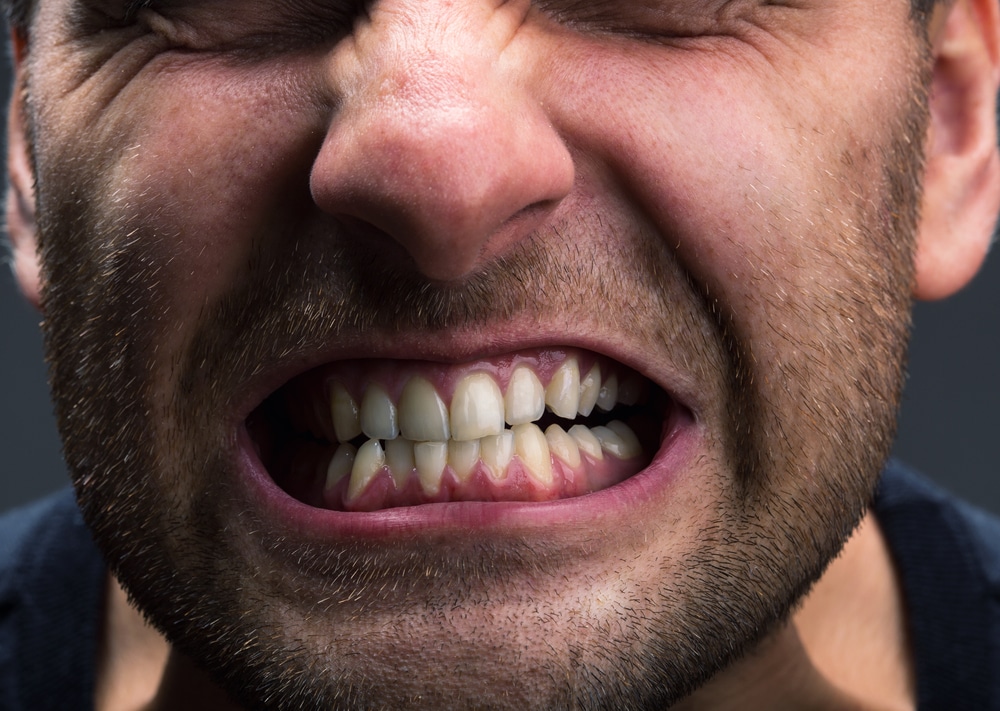
Bruxism, or teeth grinding, is a common side effect of stimulant or MDMA use. The constant clenching and grinding can damage the teeth and cause gum inflammation. In severe cases, it can even result in tooth loss.
Luckily, a few things can be done to help alleviate the symptoms of bruxism.
If you are experiencing teeth grinding due to stimulant or MDMA use, it is important to seek treatment. Teeth grinding can be caused by many things and is often treatable. There are a variety of treatments available depending on the cause of your teeth grinding.
Treatment for drug abuse will also address any associated teeth grinding. If you are concerned about your teeth grinding, please talk to your doctor or addiction specialist. They can help you find the best course of treatment for you.
Hallucinogens are drugs that cause perceptual distortions in the user's environment. This can include seeing, hearing, and feeling things that aren't there. The distortions can be dangerous, especially if someone takes them regularly. There are many different types of hallucinogens, including LSD, psilocybin mushrooms, and DMT. While each drug produces different effects, all of them have the potential to be addictive.
This blog post will discuss the different types of hallucinogens and the dangers of using them. We will also talk about how addiction to these drugs can happen and what treatment options are available for those who need help.
Hallucinogens are a diverse class of drugs that alter perception, mood, and cognition. They range from naturally occurring substances, like morning glory seeds, ayahuasca, and certain types of mushrooms, as well as synthetic drugs like LSD, MDMA, and ketamine.
Hallucinogens can be broadly grouped into psychedelics, dissociatives, and deliriants.
While the effects of LSD and other hallucinogenic drugs can vary depending on the substance and the dose, they typically cause users to see, feel, and hear things that are not real. Hallucinogens can also cause mood changes, making users feel happy, angry, or afraid. In some cases, users may have difficulty distinguishing between reality and fantasy.
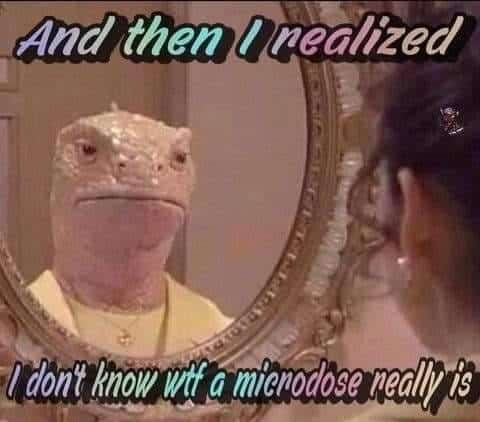
At higher doses, hallucinogens can cause users to experience frightening hallucinations, leading to anxiety and paranoia. Long-term effects of hallucinogen use include flashbacks, alterations in mood and perception, and difficulty thinking clearly.
When someone takes a hallucinogenic drug, it affects the brain by causing changes in brain chemistry. These changes can lead to an altered state of consciousness. In some cases, people may have a bad trip, which means they have a negative experience while on the drug. Hallucinogens can be dangerous because they can cause people to do things that they would not normally do, such as putting themselves in harm's way.
Recently, there has been an increase in the use of hallucinogens in the United States. These drugs alter a person's perception of reality, often causing them to see or hear things that are not there. While some believe that these drugs can offer a spiritual experience, they come with a range of side effects that can be dangerous or even deadly. Hallucinogens can cause users to:
It is important to be aware of the risks associated with these drugs before using them.
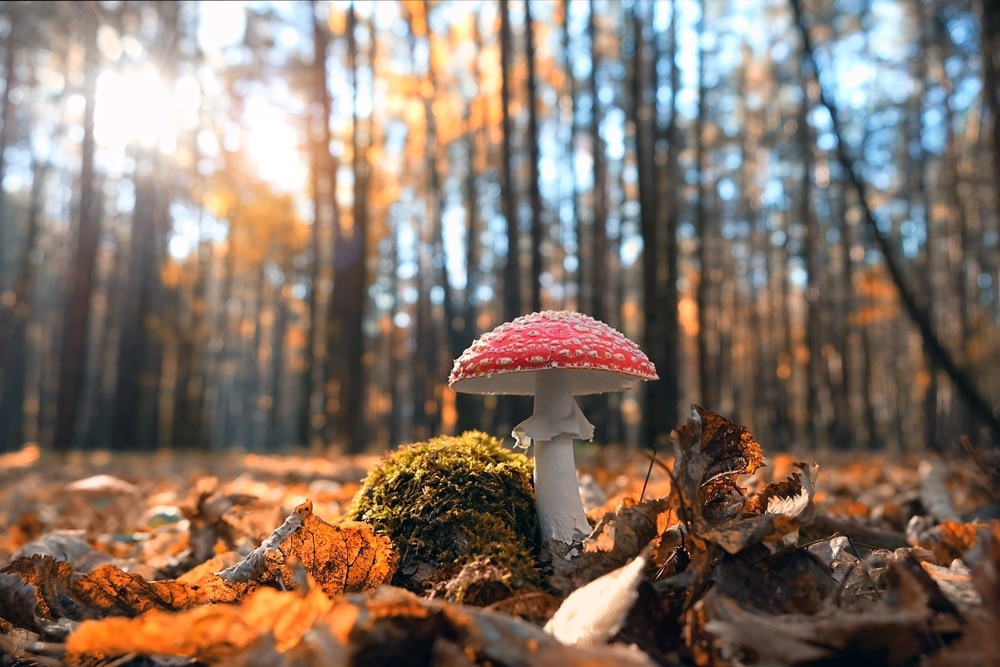
Mushroom abuse has been on the rise in recent years, as people are becoming more aware of the type of mushroom known as psilocybin mushrooms. These mushrooms contain a chemical compound called psilocybin, which is structurally similar to the psychoactive compound found in LSD. While the effects of psilocybin are not as intense as those of LSD, they can still be very powerful and cause severe changes in perception and mood.
People who abuse psilocybin mushrooms often do so because they enjoy the hallucinations and altered state of consciousness that they produce. However, there is a risk of developing a psychological dependence on these mushrooms and a physical dependence if used frequently.
Though typically not as addictive as other substances, it is still possible to develop an addiction to hallucinogens. Usually, this occurs after substance abuse, for example, taking high doses of the drug or taking it more frequently than intended.
When someone regularly takes high doses of a substance, they become tolerant of it. This means they need to take increasingly larger amounts of the substance to feel the same desired effects. As tolerance builds, so does the risk of addiction.
In addition, substance abuse can quickly lead to changes in brain chemistry. These changes can be difficult to reverse and may cause lasting damage. Hallucinogens are particularly dangerous because they can cause both physical and psychological dependence.
Though typically not as addictive as other substances, it is still possible to develop an addiction to hallucinogens. Usually, this occurs after substance abuse, for example, taking high doses of the drug or taking it more frequently than intended.
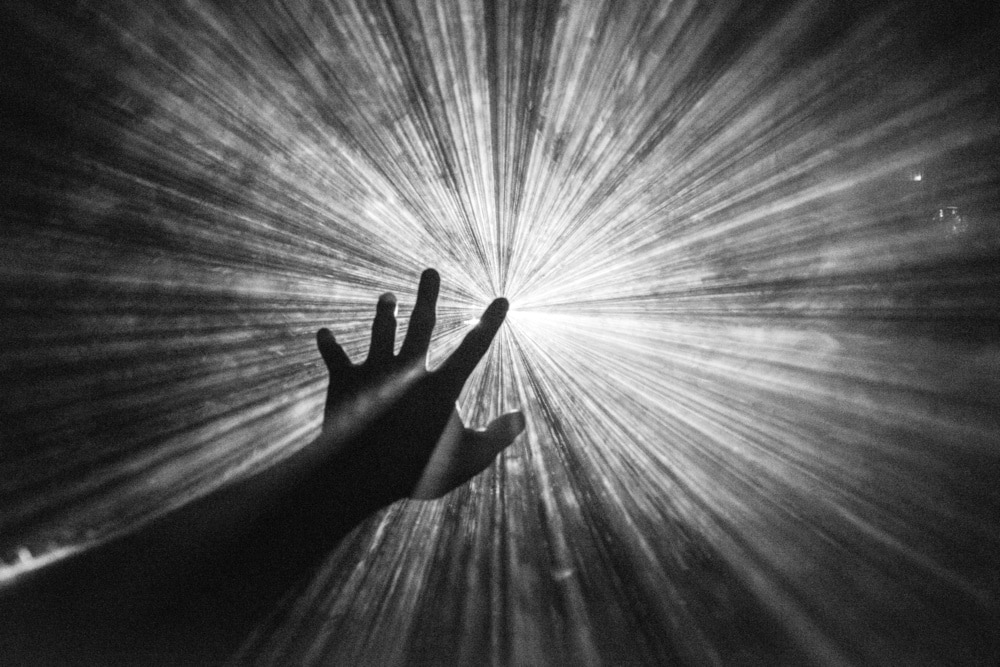
As with other forms of drug addiction, addiction to hallucinogens can lead to financial problems, relationship difficulties, and health issues. In some cases, people may even experience hallucinations that are not pleasant. If you or someone you know is struggling with an addiction to hallucinogens, it's important to seek professional help. It is possible to overcome substance abuse and live a healthy life with treatment.
Just like the treatment of alcoholism, addiction to hallucinogens can be a difficult addiction to overcome without professional help. There are many different types of hallucinogens, and each person reacts to them differently. Some people may only need outpatient treatment, while others may require inpatient treatment at a rehabilitation center.
The first step in addiction treatment is usually detoxification, which helps the person safely withdraw from the drug. After detox, the person may undergo counseling and therapy to help them understand and cope with their addiction. Medication may also be prescribed to help manage withdrawal symptoms and cravings in some cases.
Addiction treatment centers offer relapse prevention programs, which can help individuals stay on track in recovery. Many centers also offer alternative treatments, such as yoga and meditation, which can help to reduce stress and promote overall wellness.
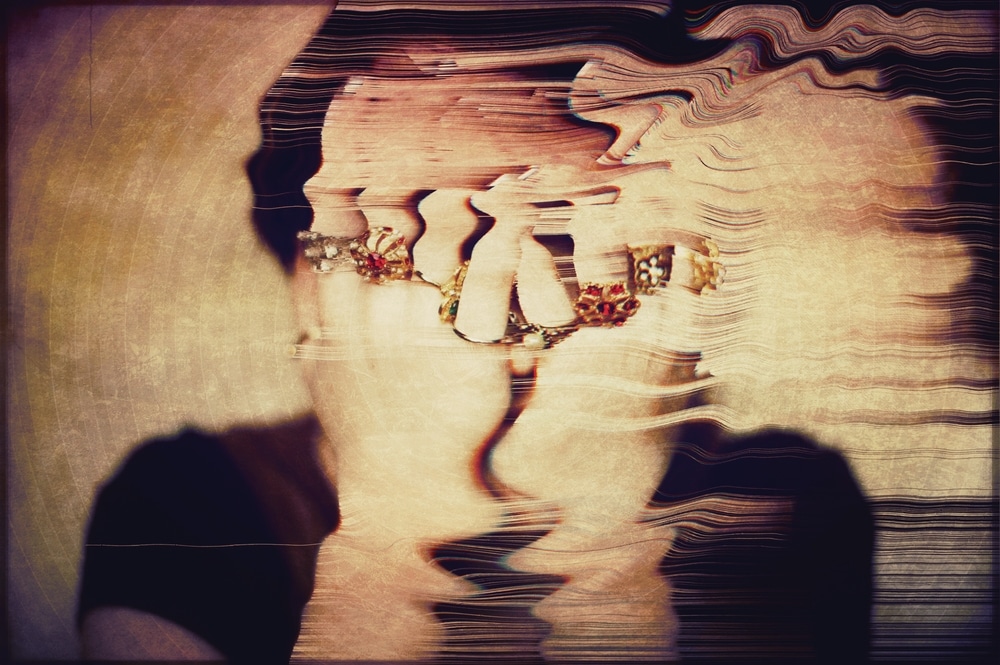
If you or someone you know is struggling with addiction to hallucinogens, please seek professional help. Addiction treatment centers can provide the care and support necessary for a successful recovery. They will also offer ongoing support that makes it possible to overcome addiction and live a healthy, fulfilling life.
Unsure where to start? Let us match you with the best treatment facility to suit your needs. Check out our directory of reputable rehabilitation centers.
It is not easy to tell that a loved one is abusing drugs, especially in the early stages of addiction. You may notice changes in their moods or behaviors, but that could be anything. However, if your intuition tells you there’s a problem, it might be worth taking stock of your concern. A great place to start is to watch out for paraphernalia.
People who abuse drugs often use items like spoons, silicone bongs, glass bongs, beaker bongs, acrylic bongs, roach clips, etc., to produce, hide or administer drugs. So, if you find these items in their belongings, it could be a sign that they are abusing drugs. In which case, you may need to help them get the help they need to stop abusing drugs.
Abusing drugs doesn’t always translate to addiction, but it is a precursor to addiction. Early intervention is therefore critical to preventing addiction and accompanying problems.
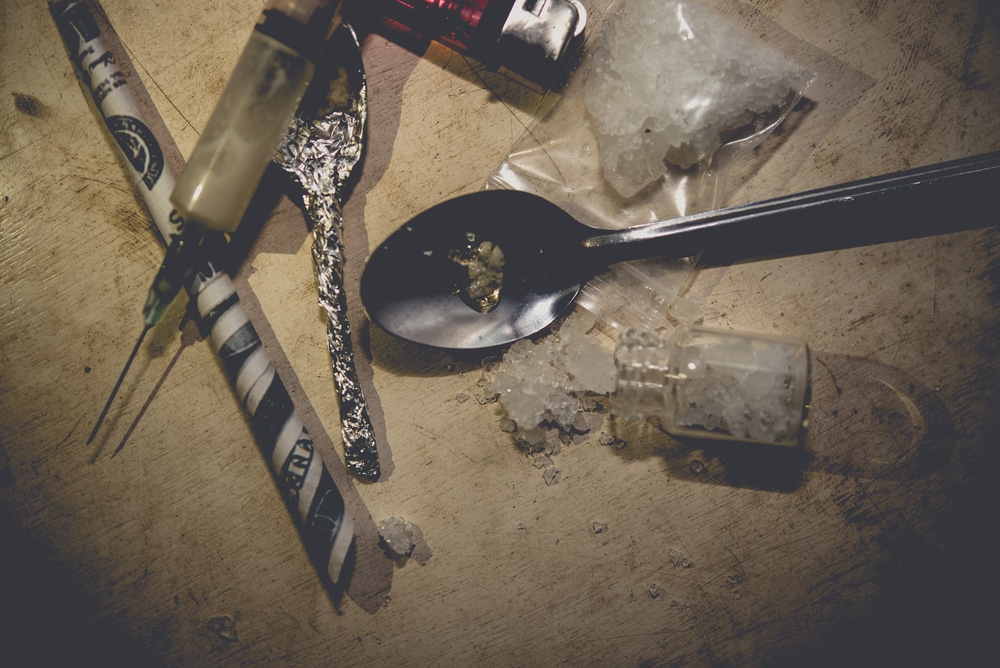
It can be challenging to identify drug paraphernalia because they look like legitimate items. Marijuana pipes and bongs for sale, for example, often have a disclaimer indicating they’re meant to be used only with tobacco products.
While drug paraphernalia varies from one manufacturer to another, more manufacturers are making them in bright, trendy colors with designs like dragons, wizards, devils, and skulls. They do this to glamorize drug use and make their product appealing to their target market.
An essential part of understanding drug use is identifying the items that drug addicts use to hide, consume or produce drugs. You may find these items in your loved one’s backpack, car, or bedroom.
Note: If you come across any drug items in your loved one’s belongings, you might be tempted to check them out. But you should not touch these items as some drugs may be absorbed through the skin.
Roach clips are great for pinning the hair back. But drug users may use them to hold the blunt or joint to avoid burning their fingers when they become too short to hold. You can also watch out for small joints and blunts in the trash can.
Smoking devices like hand pipes, bongs, dab rigs, DIY disposable devices, and hookahs are also very common among those who smoke marijuana.
Tin foil scraps or pieces of aluminum foil are everyday household items and could be easy to ignore. But if you find them in your loved one’s belongings or the waste bin, it could be a sign they’re smoking heroin or inhaling meth fumes.
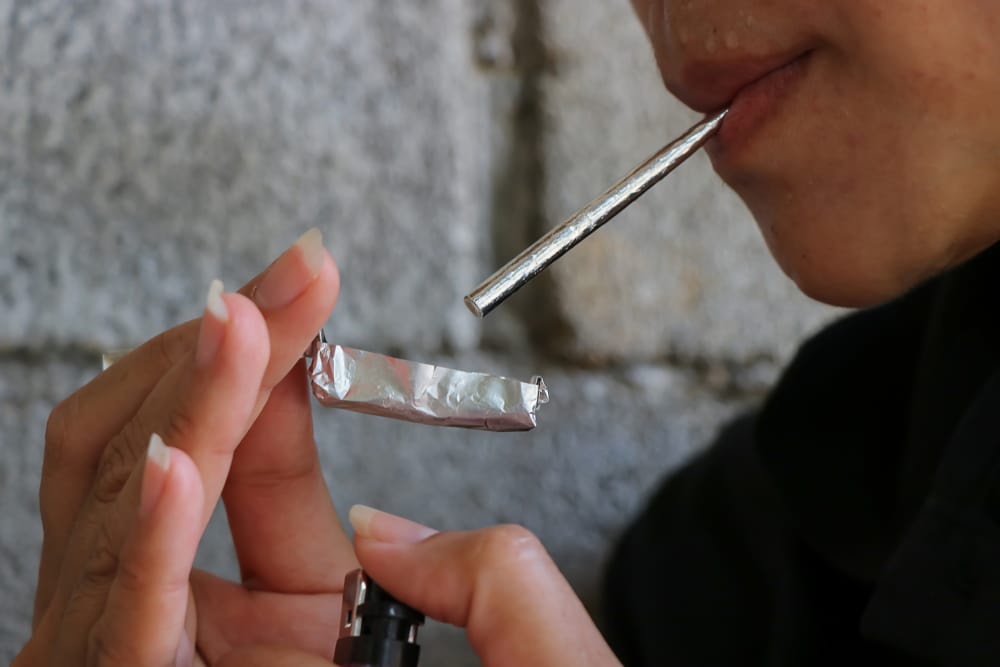
People who smoke drugs chop the crystals with razors or ATM cards and place them onto a foil. They then hold it over a lighter or candle. When it smokes, they use a dollar bill, rolled-up foil straw, metal straw, or glass straw to inhale the smoke.
One of the first signs that your loved one is using drugs is missing spoons. Suddenly, you’ll notice your cutlery service for 12 is down to 8 spoons, etc.
Drug addicts use spoons for cooking powdered drugs. They place the drug in the spoon bowl, add some water, and heat it over the flame until it becomes liquid. But since they can’t return the burnt spoon, they’ll hide it for their next use.
Alternatively, they may use bottle caps and hold them with pliers. You may also find a burnt lighter as these go hand in hand.
Needle tracks or “track marks” on your loved one’s body are apparent signs of cocaine, heroin, meth, or prescription painkiller abuse. But like other addicts, your loved one may do a great job hiding the track marks. So, if you find needles or syringes along with some belt or elastic bands in their rooms or backpacks, that might be a clear indication they’re using. Belts or bands are used to constrict the upper leg or arm to make the veins more prominent for injection.
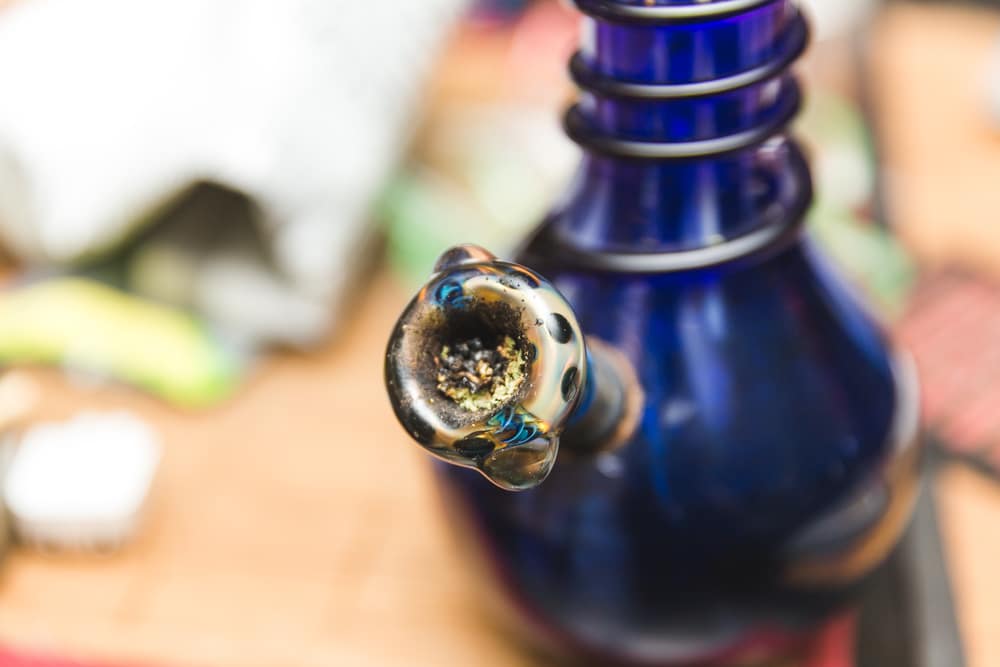
Glass water pipes or bongs indicate that someone is smoking cannabis, spice or other herbal substances like K2 or "spice". A bong is a portable filtration device with a bowl outside of a vertical tube and water at the bottom of the pipe for water filtration.
A glass water pipe is just one type of bong. Others include ceramic, plastic, metal, and bamboo. Bongs also come in different designs, including beakers, round base, percolators, straight tube, and multi-chamber. Multi-chamber pipes provide a smooth hit. They can also be incredibly small like a mini bong.
These might be harmless. But when there’s suspicion about drug use, it’s best to pay attention to any plastic and small paper bags in their belongings. People who abuse drugs store and carry drugs in makeup bags and plastic baggies.
These two seem harmless but are often used by people who abuse drugs like meth or ecstasy. Usually, these drugs cause teeth grinding and jaw clenching. So, users use pacifiers or lollipops to prevent these side effects from happening while they’re intoxicated.

At the end of the day, finding these items in your loved one’s belongings doesn’t guarantee that they’re struggling with drug addiction. It’s, therefore, crucial to watch out for other signs before taking the next step. Some indications of addiction may include:
If your loved one has drug paraphernalia and is exhibiting some of the signs shared above, it’s time to act fast. Start talking with professionals to determine treatment options suitable for your loved one. Remember, every addiction patient is different, so a one-size-fits-all approach may not apply in your case.
Like music, rave outfits have evolved over the years. Most rave outfits do not trend for too long. Partygoers ditch them to try something new that is trendy at the time.
Rave outfits are a significant part of the rave scene. They allow partygoers to express themselves without necessarily feeling the pressure to conform to societal and cultural norms. People don’t go to raves to impress anyone. They go to have a good time and do things they can’t do in their day-to-day lives. It is no wonder that those who don’t party find the outfits somewhat nonsensical.
Raves made a debut in the mid-’80s. At the time, the rave scene was all new, so the dress code wasn’t defined. Most people who attended the 80s raves were hippies and part of traveling communities. From them, it was all about peace, love, unity. They did not pay much attention to what they wore to raves. However, most of them wore lots of makeup, had big hair, and had extravagant outfits.
In the early 90s, people started paying more attention to their rave outfits, and a dress code developed. Most people wore similar outfits to fit in the rave scene. The dress code changed frequently as the years went by. Today, it is unlikely that you will see anyone showing off midriffs or donning phat pants that were go-to outfits in the early 90s. Instead, they wear more revealing outfits.
This article will discuss how festival fashion has changed with time. We will look at rave outfits in the early 90s, late 90s to early 2000s, mid 200s to late 2000s, and today’s rave outfits. Let’s dive in.

Raves started gaining popularity in the early 90s when rave music somehow found its way to mainstream music. Note that the rave scene was still disorganized during this time, and most parties were held outside.
Those going to raves wanted to seem friendly, fun, and happy. Therefore, they opted for brightly-colored clothes.
Most festival outfits in the early 90s were functional. Sometimes, the outfits included hydration packs. Other than comfortable outfits, everyone opted for comfortable shoes. It was not unusual to see people donning brightly colored tie dye t-shirts paired with comfortable pants heading to a rave festival.
Neon colors were also the go-to option at the time. Wearing revealing clothes was not an option since most music festivals were held in the open.
With time, raves became more organized. Ecstasy also became more popular when partygoers discovered the euphoric feeling it gives them. The ecstasy combined with sophisticated light and sound encouraged people to try psychedelic outfits like boiler suits.

Boiler suits gained popularity when PA’s like Dye Witness and Altern-8 wore them during their sets. Their fans copied their style, and in no time, they wore them to every rave. Reportedly, the masks partygoers wore at the time were full of menthol substances that helped them enhance the effects of illegal drugs they took at the event, including MDMA, LSD, mushrooms or whippets.
In the 2000s, most people shifted to wilder looks and outfits. Rave fashion featured string vests, fluffy boots, neon tank tops, hair bands, whistles, and Day-Glo paints. Like the early 90s, they preferred bright colors as opposed to dull ones.
Both boys and girls went to raves to be seen. The boys saw it as an opportunity to express themselves, and the girls wanted to look attractive.
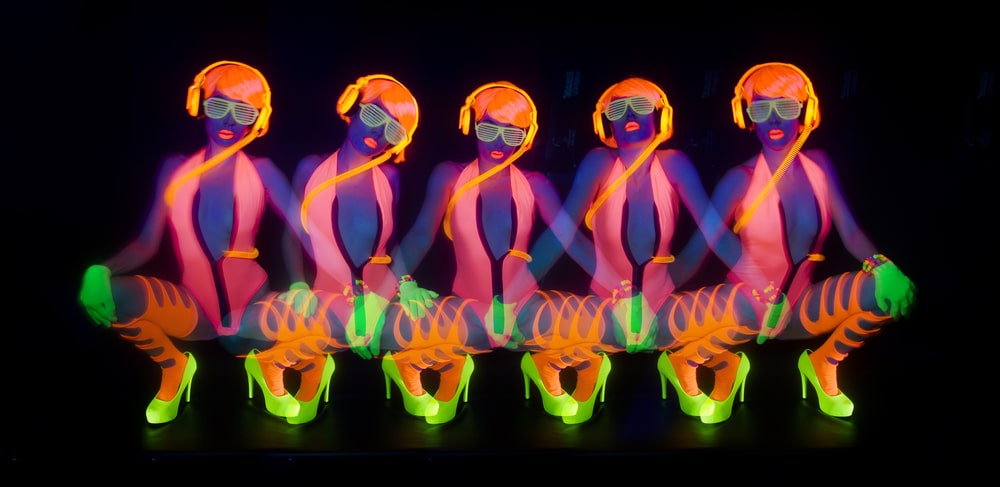
In the early 2000s, people also embraced cyber wear, which featured dummies (pacifiers and lollipops) and glow sticks. Dummies reportedly prevented people who had taken ecstasy from grinding their teeth, while glow sticks improved the rave experience.
Generally, people toned down their outfits in the mid to late 2000s. The main reason for this is that raves happened more often, almost every weekend, and everyone wanted to be comfortable on the dance floor. Additionally, most festivals, including every EDM festival, were held in clubs instead of open fields.
Rave wear in the mid to late 2000s mainly was streetwear, which means people wore what they would typically wear on the streets. Jeans, hoodies, trainers, and tracksuits became common in the rave scene.
Streetwear became popular because partygoers were mainly from the new generation, and modern fashion styles and street styles greatly influenced them.
Today, people wear whatever they want when going to raves. It is unlikely that you’d see anyone wearing neon outfits, fluffy boots, tank tops, string vests, and other rave wear that people used to wear in the past.
Like the other years, people go to raves to have fun. Therefore, they try to express themselves with what they wear based on the music and artists they love.

You may also notice that the rave clothing people wear while going to clubs is different from what they wear while going to festivals. Most times, festivals are held outdoors during summer, so people don’t dress up much. For festival clothing during summer, girls prefer wearing bikini tops or a crop top paired with booty shorts and a pair of sneakers, while the boys wear shorts.
There are a few instances when people try to mimic old rave gear by wearing bright-colored outfits and accessories, especially during festivals when they want to express themselves. However, this doesn’t necessarily mean they are re-embracing the old rave outfits.
The EDM community has always had a unique fashion sense. Currently, kandi culture is trending.
A few years back, members of the EDM community mostly wore tulle and neon-colored outfits. Today, they have embraced earthy and pastel colors. The girls mostly wear micro shorts and micro skirts that have cutouts.
Festival wear in this community also comprises samba bras, plunge bras, pasties, sheer tops, and halters. The most common prints are psychedelic prints, aliens, holograms, and mermaids.
As discussed, rave outfits are constantly evolving. The only thing that remains constant is the ability of rave goers to express themselves and feel empowered by their outfits.
Trends change constantly, but the best thing about rave fashion is that you can wear whatever you want without feeling the pressure to fit in because you are free to express yourself in whatever way.
